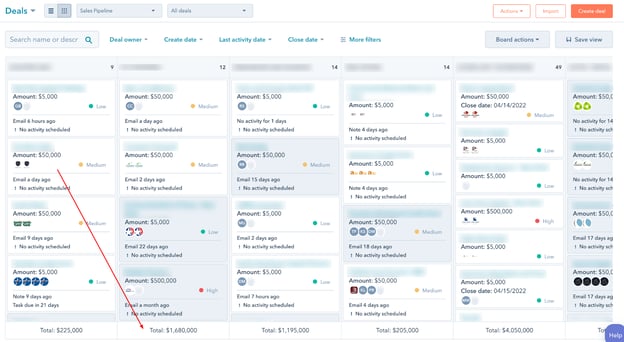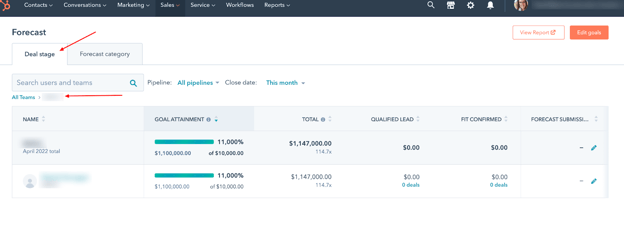The Client
Construction lending is unique even in the lending world. Since there are so many processes and triggers for the release of funds, lenders and clients need a better way to keep things organized. Our client stepped up to the challenge. This client offers an all-in-one software platform for construction lenders. In their platform, senders can order draw inspections, do background checks on contractors, review project costs, and more. Their cloud-based system provides a seamless solution for construction lenders from project start to finish. Their target persona is lenders with 25-250 active construction loans.
Lenders pay per service ordered on the platform. Naturally, this means our client wanted each lender to order as many services and inspections on their system as possible, with the end goal of the lender exclusively using their platform.
Although the company had been around since 1985, they never moved their CRM online or formalized their sales process. They were interested in HubSpot’s Sales Hub and CRM tools but needed a partner to assist with the build-out. ClearPivot was happy to come on board to help!
The Problem
In our first meeting, the client held up an old Rolodex and a stack of business cards and announced that these were their current CRM system. The team knew they needed to organize how they managed prospective client contacts. They wanted a streamlined sales process so they would be on the same page.
Contacts
Simply entering contact information from prospective users’ business cards into a spreadsheet wouldn’t cut it. They also needed a way to:
- Track activities
- Keep leads from falling through the cracks
- Identify sales opportunities, especially upsell opportunities for current users
Deals
The client's main goal was to turn their sales process into “a repeatable, duplicatable machine.” Members of the sales team needed to understand the standard sales operating procedures. Additionally, the sales team needed to know where each prospect was in the process, the likelihood of the deal closing, and identify roadblocks.
Tracking to inform decisions
The client hoped to use forecasting reporting tools in the Sales Hub to predict revenue. They also wanted to know where leads were coming from so they could assess the efficiency of their advertising and marketing spend. After a lender started using their system, our client hoped the lender would fully adopt the software. But without any processes to help move users in that direction, the team was left hoping and praying for expansion opportunities to come along.
The Solution
ClearPivot had the know-how to set the company's HubSpot Sales Hub up for success. But before jumping into HubSpot, we had to clearly define contact properties, the sales process, and the deal pipeline. Several conversations with the client highlighted the most critical data to collect. It gave us a starting point for the implementation.
We rolled out a four-stage customization:
- Custom properties and views for HubSpot Contacts, Companies, and Deals
- Set up the deal pipeline and deal stages, including necessary workflows to align contact and deal records
- Build forecasting and sales reports
- Write SOP documentation
Each deal needed to show an estimate of potential revenue from the prospect. The sales team also needed to know the priority level of prospects. We assigned each priority level (high, medium, and low) an amount ($500,000 - $5,000). Using a workflow, the Deal Amount property was filled in based on the priority level, and the total was calculated on the deal board. This data informed the custom forecasting reports for the Sales Dashboard.


Finally, we trained the client on HubSpot Sales Hub best practices. We also explained the customizations we set up. We wrote a Standard Operating Procedure document detailing the sales process and how it worked within their HubSpot portal. The purpose of the SOP doc was to provide a streamlined process document and define a streamlined and repeatable sales process for their sales team.
The implementation project took 6 weeks in total. After that, the client was able to take off running and has been operating their new HubSpot portal successfully ever since.
